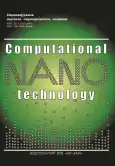Генетическое программирование и объектное моделирование манипуляционных роботов
- Авторы: Крахмалев О.Н.1
-
Учреждения:
- Финансовый университет при Правительстве РФ
- Выпуск: Том 10, № 2 (2023)
- Страницы: 16-25
- Раздел: АВТОМАТИЗАЦИЯ И УПРАВЛЕНИЕ ТЕХНОЛОГИЧЕСКИМИ ПРОЦЕССАМИ И ПРОИЗВОДСТВАМИ
- URL: https://journals.eco-vector.com/2313-223X/article/view/568054
- DOI: https://doi.org/10.33693/2313-223X-2023-10-2-16-25
- EDN: https://elibrary.ru/APHXDT
- ID: 568054
Цитировать
Полный текст
Аннотация
Рассмотрено применение генетического алгоритма для решения обратной задачи кинематики манипуляционных роботов. Определены основные понятия метода поиска решений с помощью генетического алгоритма. Представлена блок-схема простого генетического алгоритма. Обосновано решение использовать многопроцессорные вычислительные системы (транспьютеры) для вычисления генетических операторов. Это позволит многократно повысить эффективность выполнения генетических алгоритмов. В качестве примеров выбраны манипуляционные системы с тремя и четырьмя звеньями. Постановка задачи состояла в определении шарнирных координат промышленного робота по заданным декартовым координатам положения центра инструмента (TCP – Tool Center Point), устанавливаемого на его конечном звене. Полученные результаты подтверждают эффективность генетических алгоритмов при решении обратных задач кинематики промышленных (манипуляционных) роботов. На основе теории графов определена процедура генетического программирования как способ поиска оптимальных кинематических структур манипуляционных систем роботов. Показано использование генетического программирования для модификации объектных моделей манипуляционных роботов. Рассмотрено объектное представление динамической модели манипуляционных роботов. Отмечено, что рекомбинация объектов, соответствующих математическим выражениям, имеющим механический смысл, требует кинематического соответствия используемых объектов. Составление объектных схем предложено выполнять с использованием компьютерных программ, автоматизирующих этот процесс на основе принципа визуального программирования (Low-code).
Полный текст
Об авторах
Олег Николаевич Крахмалев
Финансовый университет при Правительстве РФ
Автор, ответственный за переписку.
Email: onkrakhmalev@fa.ru
ORCID iD: 0000-0002-9388-4137
кандидат технических наук, доцент; доцент департамента анализа данных и машинного обучения Финансового университета при Правительстве РФ
Россия, МоскваСписок литературы
- Al Tahtawi A., Agni M., Hendrawati T. Small-scale robot arm design with pick and place mission based on inverse kinematics // Journal of Robotics and Control. 2021. No. 2. P. 6. DOI: https://doi.org/10.18196/jrc.26124
- Byun G., Kikuuwe R. Stiff and safe task-space position and attitude controller for robotic manipulators // Robomech. J. 2020. No. 7. P. 18. DOI: https://doi.org/10.1186/s40648-020-00166-1
- Ferrentino E., Chiacchio P. On the optimal resolution of inverse kinematics for redundant manipulators using a topological analysis // J. Mechanisms Robotics. 2020. No. 12 (3). P. 031002. DOI: https://doi.org/10.1115/1.4045178
- Kalyayev A.V., Galuyev G.A. Digital neurocomputer VLSI-systems with parallel architecture. In: International Neural Network Conference. Dordrecht: Springer, 1990. DOI: https://doi.org/10.1007/978-94-009-0643-3_17
- Karpińska J., Tchoń K. Performance-oriented design of in- verse kinematics algorithms: Extended Jacobian approxi-mation of the Jacobian pseudo-inverse // J. Mechanisms Robotics. 2012. No. 4 (2). P. 021008. DOI: https://doi.org/10.1115/1.4006192
- Krakhmalev N.O., Korostelyov D.A. Solutions of the inverse kinematic problem for manipulation robots based on the genetic algorithm // IOP Conf. Ser.: Mater. Sci. Eng. 2020. No. 747. P. 012117. DOI: https://doi.org/10.1088/1757-899X/747/1/012117
- Krakhmalev O., Krakhmalev N., Gataullin S. et al. Mathe-matics model for 6-DOF joints manipulation robots // Mathe-matics. 2021. No. 9. P. 2828. DOI: https://doi.org/10.3390/math9212828
- Krakhmalev O. Object-oriented modeling of manipulation systems dynamics based on transformation matrices of homo-geneous coordinates // Robotics and Technical Cybernetics. 2017. No. 2 (15). Pp. 32–36.
- Krakhmalev O. Object-oriented simulation of robots’ mani-pulation systems // Robotics and Technical Cybernetics. 2018. No. 4 (21). Pp. 41–47. DOI: https://doi.org/10.31776/RTCJ.6406
- Krakhmalev O. Designing object diagrams and the method of structural mutations in models of robots’ manipulation systems. Proceedings of 14th International Conference on Electromechanics and Robotics “Zavalishin’s Readings”. Smart Innovation // Systems and Technologies. 2020. No. 154. Pp. 209–221. URL: https://link.springer.com/chapter/10.1007/978-981-13-9267-2_18
- Krakhmalev O.N. Use of structural mutations in object-oriented mathematical models of robot manipulation systems // Mathematical Models and Computer Simulations. 2020. No. 12 (1). Pp. 90–98. DOI: https://doi.org/10.1134/S023408791906008X
- Krakhmalev O., Korchagin S., Pleshakova E. et al. Parallel computational algorithm for object‐oriented modeling of manipulation robots // Mathematics. 2021. No. 9. P. 2886. DOI: https://doi.org/10.3390/math9222886
- Liu Q., Tian W., Li B., Ma Y. Kinematics of a 5-axis hybrid robot near singular configurations // Robotics and Computer-Integrated Manufacturing. 2022. No. 75. P. 102294. DOI: https://doi.org/10.1016/j.rcim.2021.102294
- Malik A., Henderson T., Prazenica R. Multi-objective swarm intelligence trajectory generation for a 7 degree of freedom robotic manipulator // Robotics. 2021. No. 10. P. 127. DOI: https://doi.org/10.3390/robotics10040127
- Malik A., Lischuk Y., Henderson T., Prazenica R. A deep reinforcement-learning approach for inverse kinematics solution of a high degree of freedom robotic manipulator // Robotics. 2022. No. 11. P. 44. DOI: https://doi.org/10.3390/robotics11020044
- Marsono M., Yoto Y., Suyetno A., Nurmalasari R. Design and programming of 5 axis manipulator robot with GrblGru open source software on preparing vocational students’ robotic skills // Journal of Robotics and Control. 2021. No. 2. P. 6. DOI: https://doi.org/10.18196/jrc.26134
- Strey A., Avellana N., Holgado R. et al. A configurable parallel neurocomputer. In: Proceedings 1995 Second New Zealand International Two-Stream Conference on Artificial Neural Networks and Expert Systems, November 20–23, 1995. doi: 10.1109/ANNES.1995.499438
- Tian W., Mou M., Yang J., Yin F. Kinematic calibration of a 5-DOF hybrid kinematic machine tool by considering the ill-posed identification problem using regularisation method // Robotics and Computer-Integrated Manufacturing. 2019. No. 60. Pp. 49–62. DOI: https://doi.org/10.1016/j.rcim.2019.05.016
- Torchigin V.P., Kobyakov A.E. Neurocomputers based on massively parallel architecture using optical means. In: Proceedings of SPIE. The International Society for Optical Engineering, December 1994. DOI: https://doi.org/10.1117/12.195591
- Tringali A., Cocuzza S. Globally optimal inverse kinematics method for a redundant robot manipulator with linear and nonlinear constraints // Robotics. 2020. No. 9. P. 61. DOI: https://doi.org/10.3390/robotics9030061
- Wajiansyah A., Supriadi S., Gaffar A.F., Putra A.B. Modeling of 2-DOF hexapod leg using analytical method // Journal of Robotics and Control. 2021. No. 2. P. 5. DOI: https://doi.org/10.18196/jrc.25119
- Ye H., Wang D., Wu J. et al. Forward and inverse kinematics of a 5-DOF hybrid robot for composite material machining // Robotics and Computer-Integrated Manufacturing. 2020. No. 65. P. 101961. DOI: https://doi.org/10.1016/j.rcim.2020. 101961
- Крахмалев О.Н. Объектное моделирование в кинематике манипуляционных роботов // Нейрокомпьютеры: разработка, применение. 2022. № 5. С. 55–66. DOI: https://doi.org/10.18127/j19998554-202205-06
Дополнительные файлы























